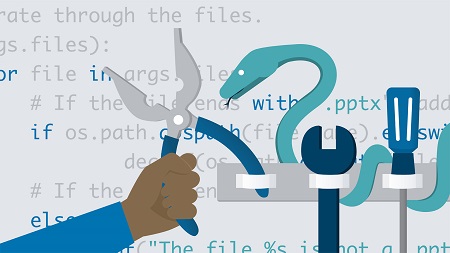
English | MP4 | AVC 1280×720 | AAC 48KHz 2ch | 0h 56m | 274 MB
Tools aren’t the flashiest, most attention-grabbing type of software. But a great tool-one that successfully automates or enhances a repetitive process-gives valuable time back to your colleagues, allowing them to spend less time clicking buttons and more time on thoughtful projects. Tool development exists in a space between IT support and software engineering, and if you’re tasked with creating tools, there are some important principles to keep in mind. In this course, Scott Simpson discusses designing for end users, craftsmanship, and trust as they relate to building small software utilities. He surveys concepts related to tool development, and uses Python to explore ideas that you’ll want to keep in mind when developing tools for your users.
Table of Contents
Introduction
1 Building tools with Python
2 What’s new in this update
Designing Tools
3 Types of tools
4 Languages and toolkits
5 Planning a tool
6 Building a tool
7 Challenge Plan a tool
8 Solution Plan a tool
Building a Tool with Python
9 Exploring the sample tool
10 Using shell commands from Python
11 Challenge Use shell commands in Python
12 Solution Use shell commands in Python
13 Accepting arguments
14 Challenge Practice with arguments
15 Solution Practice with arguments
16 Providing error messages and logging
17 Ensuring functionality
18 Challenge Check for necessary conditions
19 Solution Check for necessary conditions
20 Adding a user interface
21 Packaging and distributing a tool
22 Supporting the tool
Conclusion
23 Next steps
Resolve the captcha to access the links!